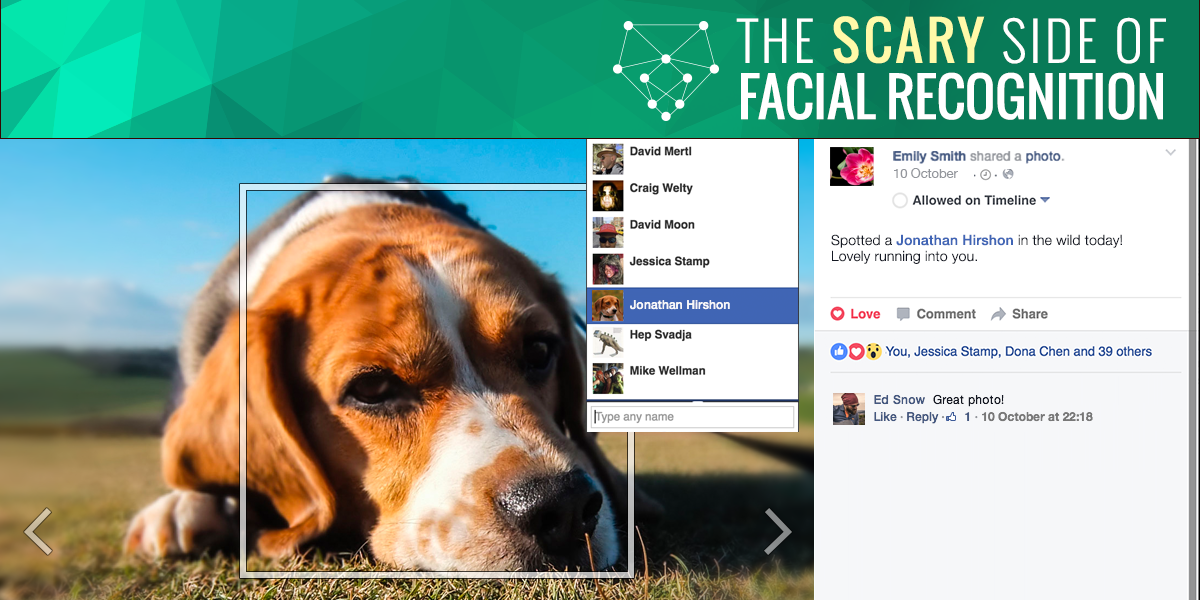How to dodge facial recognition on the Web

Is it possible to keep your face, untagged, off the Web?
“Unless you live in a cave, are a hermit for life, and never go outside, it’s not possible,” says Jonathan Hirshon, a self-employed public-relations guru. Yet the visage of Hirshon, who doesn’t live in a cave (I’ve visited his house), is not a hermit (he’s married and has a dog), and regularly flies around the world for his clients, is virtually impossible to find online.
Over the past two decades, despite being plugged in to networks such as LinkedIn and Facebook, Hirshon has worked to keep his face off the Web.
It’s a quixotic journey at best, Hirshon says, requiring an obsessive level of dedication, an unwavering desire to buck social Web norms, and a little help from his friends.
“This is a nontrivial exercise. It’s really, really, really hard,” Hirshon says. And “I’m sure that somewhere on the Internet, there are pictures of me in the background.” But he’s not tagged in them, and so facial-recognition algorithms from Google, Facebook, and others can’t easily identify him.
So why does he do it? “To educate people about the importance of privacy and thinking before you post,” he says. “The more people who do that, the better.”
Here are Hirshon’s tips to dodge facial recognition and control your image on the Internet.
1. Stop tagging yourself
Tagging, Hirshon says, is a way for Internet companies to add a layer of data to a photo. Without that additional information of who is in a photo, companies can’t use the photo to improve their facial-recognition algorithms, a tool they love because it helps keep their users in their apps and on their websites.
2. Don’t let others tag you, either
When somebody tags you on Facebook or Instagram, ask them to untag you. Make it clear to your friends that you don’t want to be identified in photos, for the same reasons as above. If you really want a copy of the photo, ask for one to be sent to you, or ask if you can download it for your personal files.
3. Avoid the cameras
Not being in a photo in the first place means that you don’t have to worry about asking somebody to untag you. Thanks to high-quality smartphone cameras, social photos have become ubiquitous—and selfies even more so. Avoid both.
4. Ask your friends to take down photos you’re in
Even more aggressive than policing tags, this tip keeps the image itself out of social-network databases completely.
“The chances of somebody posting a picture of me or you—the odds are extraordinarily high that it’s someone you know,” he says. And if you know them, then you stand a better chance of getting that photo taken down.
5. Try the Spartacus hack
In 1993, a New Yorker cartoon quipped, “On the Internet, nobody knows you’re a dog.” With facial-recognition algorithms today, that is hardly the case. But by using a method inspired by the Hollywood classic Spartacus, Hirshon tries to trick the Internet into thinking just that.
The Spartacus hack is Hirshon’s term for convincing his friends to tag random things (such as a dog or a pole) with his name, thus confusing facial-recognition algorithms. Kirk Douglas’ character identifies himself to the Romans as Spartacus, shortly before other slaves claim that they, too, are Spartacus, confusing the Roman overlords.
Get your friends to tag you in photos of static, definable objects such as a tea kettle or a dog, and the facial-recognition algorithm will eventually get confused as to what you actually look like, Hirshon advises.
6. Stay away from the crazy
“Don’t wear the tinfoil hat,” Hirshon says. Especially if you’ve been tagged in photos for years, accept that you may never fully separate your name from your face online.
